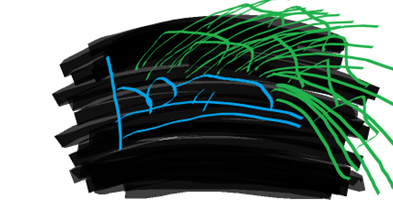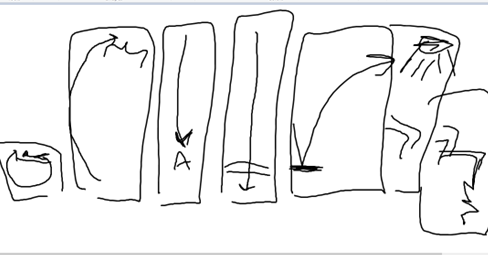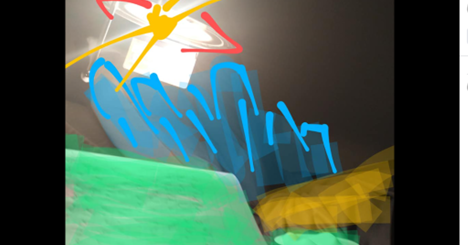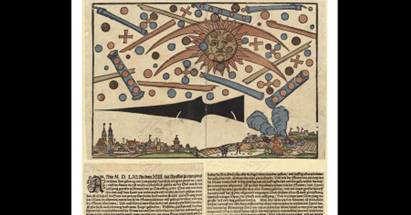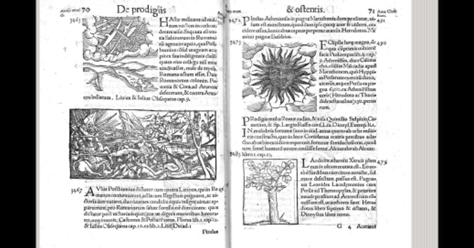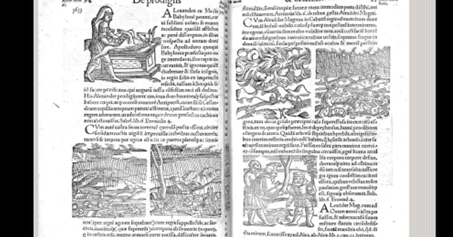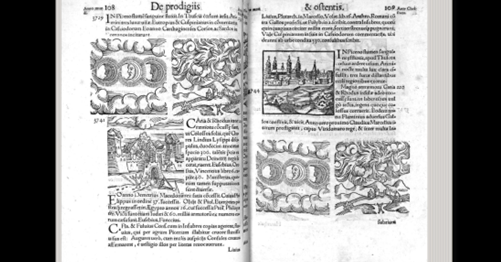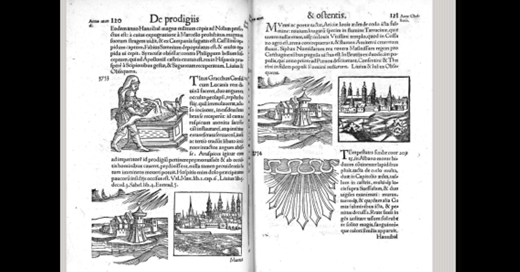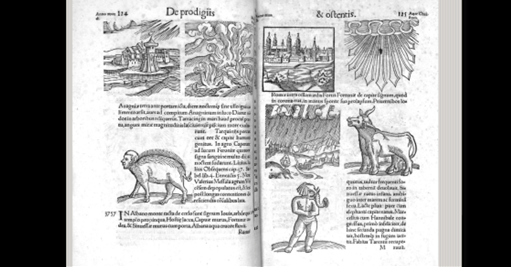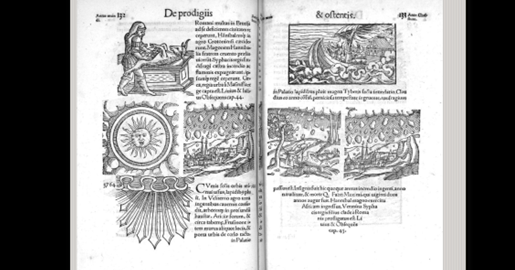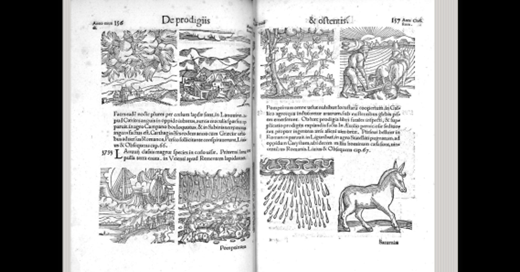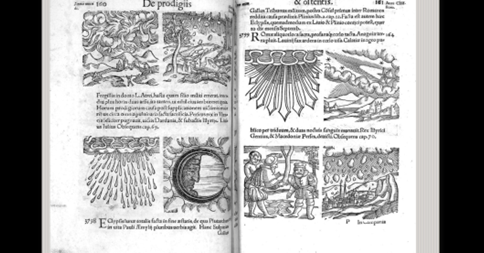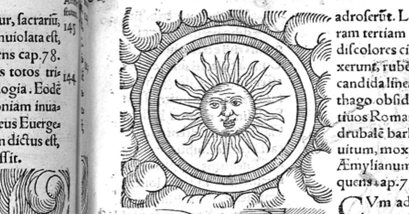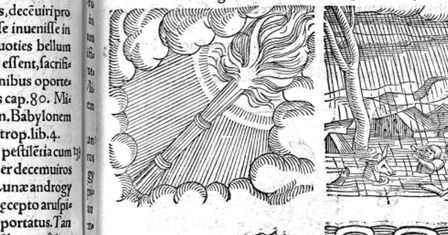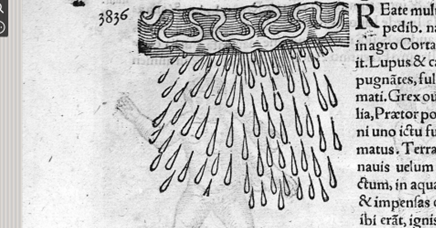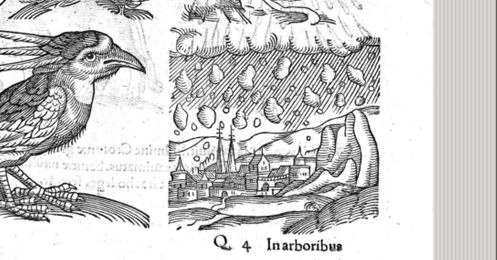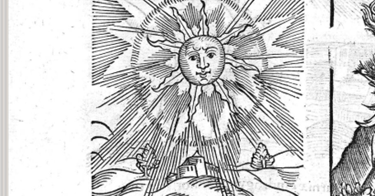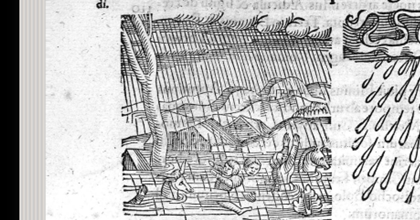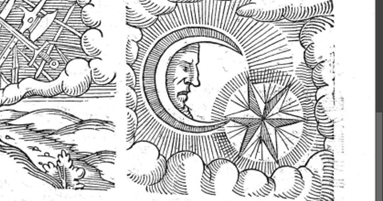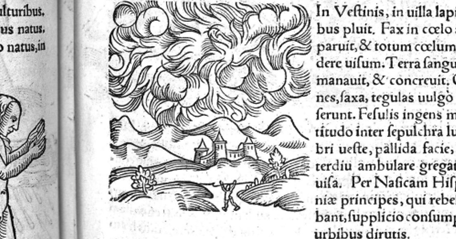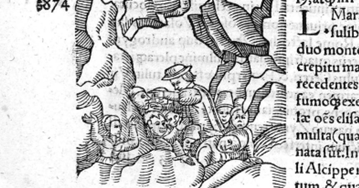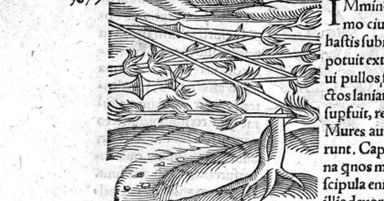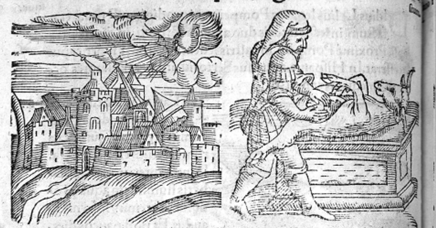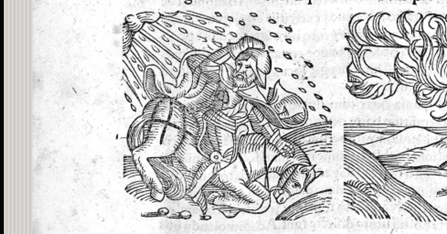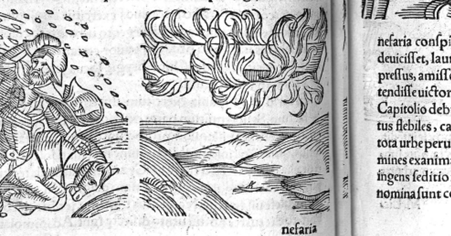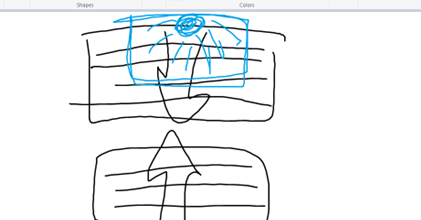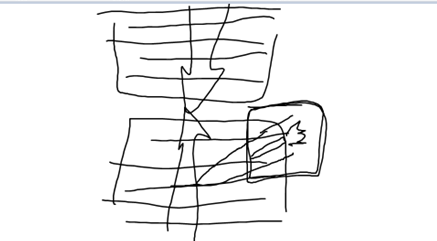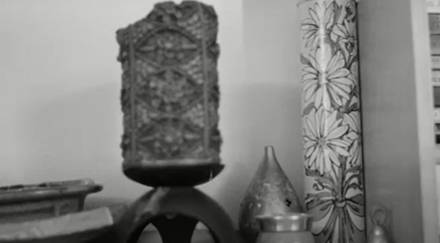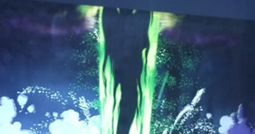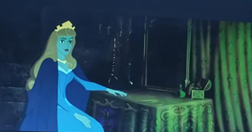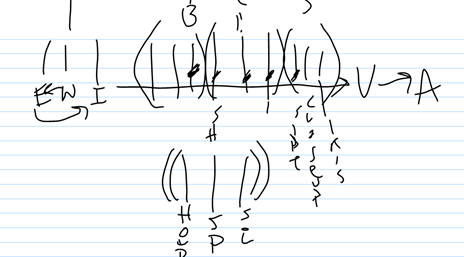Rev., Feb 15-16, 23-24, 2022.
An odd encounter in my viewing, yesterday. A movie I have not in the past much liked, Invasion of the Body Snatchers (1978), hit the spot, then, worse, turned out to be exactly about what I am thinking about, and, then, finally, suffered a rrhexis, whereat it came off the screen into my life to underwrite my basic feelings about my fellow man in the coming postcovid era, in which I believe I will never be the same in terms of hoping for the best. I posted about the rrhexis, my term for when a movie as movie ruptures out of itself, and becomes “real” in the space and world around you. This is, in fact, a failure of horror, and an example of an effect I have long since called a brimming over the top, an example of reverse agency.
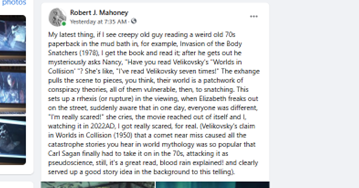
“My latest thing, if I see creepy old guy reading a weird old 70s paperback in the mud bath in, for example, Invasion of the Body Snatchers (1978), I get the book and read it; after he gets out he mysteriously asks Nancy, “Have you read Velikovsky’s “Worlds in Collision’ “? She’s like, “I’ve read Velikovsky seven times!” The exchange pulls the scene to pieces, you think, their world is a patchwork of conspiracy theories, all of them vulnerable, then, to snatching. This sets up a “rrhexis” (or rupture) in the viewing, when Elizabeth freaks out on the street, suddenly aware that in one day, everyone was different, “I’m really scared!” she cries, the movie reached out of itself and I, watching it in 2022AD, I got really scared, for real. (Velikovsky’s claim in Worlds in Collision (1950) that a comet near miss caused all the catastrophe stories you hear in world mythology was so popular that Carl Sagan finally had to take it on in the 70s, attacking it as pseudoscience, still, it’s a great read, blood rain.”
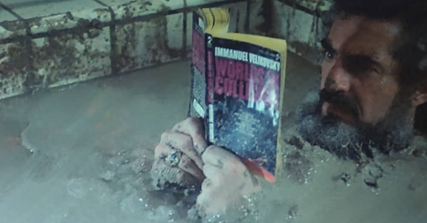
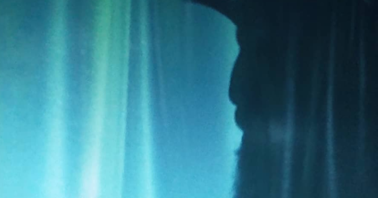
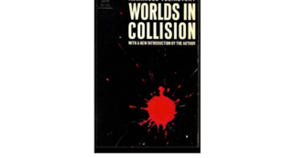
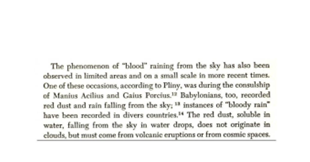


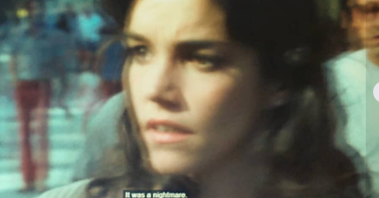
In fact, the whole scene in the public baths always struck me as odd, but I had a better notion of it this time. Let met work that out.
The movie starts, in the title sequence, on a planet not earth, maybe Mars, and we see the growth of some sort of spore that then wafts off into space and comes in down upon earth. We see the sun

then we are on a kind of miasmic Mars, smoking with a sense of life

this then reveals that here and there are gelatinous forms, developing therefrom

then we see it, the whole horror. This is, in my terminology, a vision of hell on earth, Chloros stage two level, a miasmic muck of generative godawfulness
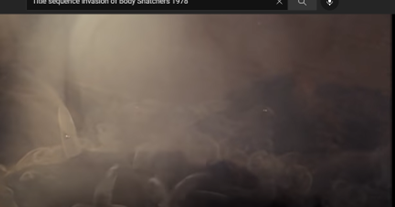
they take on form, and move with form
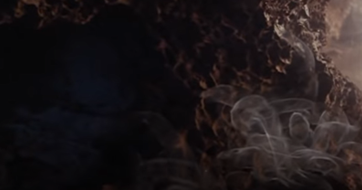
we see as if germination, inside something

then a view of Jupiter, I think

and now we see the spores rising up into space,

emblematic, Velikovskyian shot, the garden of Eden

off they go
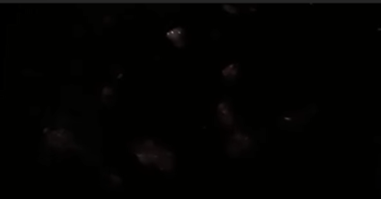
then we sort of backspin on the 2001 Space odyssey wormhole sequence when it arrives at the plateauing level, the surface of a planet, Mars, who knows
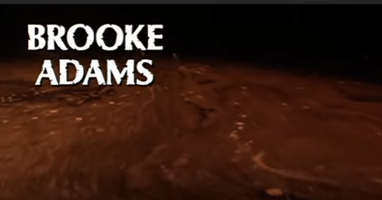
and these spores in space make noises, whirrings,
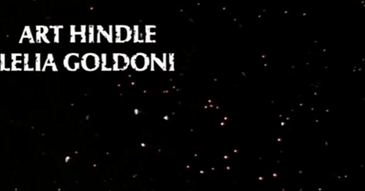
almost like spermatozoa

then very far off, the third rock

we zero in

and in
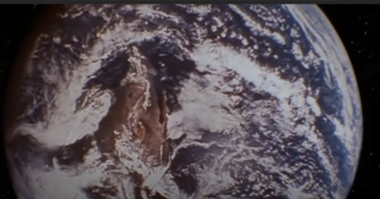
transition to our world

and, importantly, a tilt, to create a particular kind of fata morgana, a flip, like the one I saw in 2018

then a curious shot, as if rrhexising it all into ambience
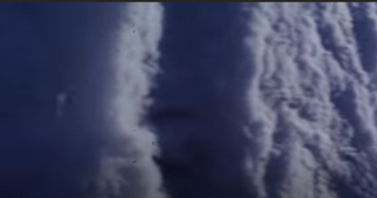
I cant exactly say what this is, looks like a cross, apotropaic
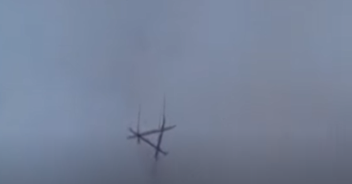
and there, as if the stake, being rung by horseshoes from space
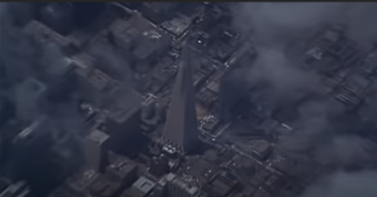
then zooming superfast, crashing in
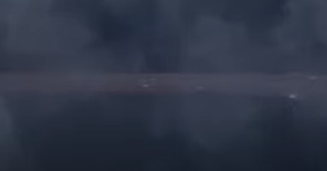
San Francisco

but foregrounded, as never would be, by plants, which seem to be wet with some sort of strange dew, ick

and touchdown, plant impregnated by the spore from space

more of it, nature covered in it, ew
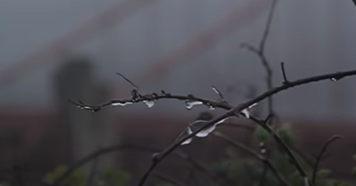
and the rain brings in more

then we go micro

love the violin screech here, er-eek
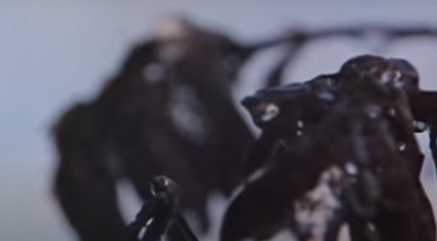
and, the logic of the scene tells us, the first pod, which, as soon as a human gets some of it on it, will then germinate, to take him or her over, by way of an Alraune double
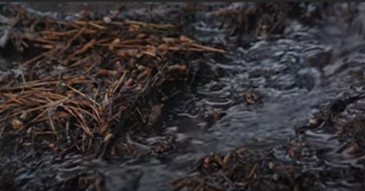
it is a beautiful sequence, likely not even carefully watched by most viewers, which lays out the entire Velikovskyian theory. Again, the Velikovsky solar system is not steady state, or imposing, in the sense of presenting human beings with many seemingly insurmountable obstacles to exploration, it is alive in its geological time now, it is as if a million years ago, still going on today; and, indeed, in which solar system as recently as a thousand BC Venus as a comet broke out of Jupiter, then warred with Mars, both events causing tremendous disasters on earth, then it swung around earth in an almost head to head equal scaled encounter, which sounds like earth cast into a death mask situation, in which Venus is the death mask, almost a twinning, with twinfire, and indeed a double, that then the prototype formation astrologically, the goal being to twin oneself with the cosmos, which I see as grotesque egotism, this then also included a solar system which was fertile in itself casting seeds all about on a space age level, that then being the real way by this paradigm that aliens come to earth. That is, just as we make use of unmanned spacecraft to venture out farther than actual human beings could go, aliens send out biological entities to carry themselves to far off places, then once they germinate, voila, an alien has landed.
The suggestion is that aliens have come to earth, but by means of a paradigm entirely different than the dominant one in postwar discourse on the topic of UFOs. That is, if I may make use of a formalist model I developed in the 70s, based on a five point star, there is the material paradigm, the aural paradigm, the formal paradigm, the color paradigm and the time paradigm. By far, in the postwar era, the material paradigm dominated, with the concentration being on the formal gore, the form being the UFO saucer or cigar shapes come to earth. The “material” is worked out mirroring the technical capabilities of earthlings, to then imagine technology in advance of us. But the material paradigm can also subdivide into the idea that aliens could come here by other means, material but different, and the idea that they come by spores and plants and grow us that way is one of those. This counterparadigm is supported by a modernist notion of twinfire of the self, that is, that there are at least two sides to everything, which would open up one of the sides to take over by another. The basic idea is appearance versus reality. In the 70s, the pendulum had swung clearly to the reality versus the appearance, but, now, of course, that has swung back. By this idea a self would have a gap space doubling in his or her shadow, and it is imagined that this space is the space able to be colonized by aliens. As the movie progresses we are going to see the emergence of this shadow space as plant space more dramatically. The complicating part is the involvement of sleep.
Next morning, not quite aware that Geoffrey has turned, Elizabeth wakes up early (she has been coaxed to it by Sutherland, her colleague). She gazes briefly, then she looks over to see an Empty Pillow, this is the Empty Pillow syndrome, the story nicely tucked into it, wherein worst case imaginings are generated, in panic, then she turns over to her side

And, surprise, even shock, she sees Geoffrey just sitting there on her side of the bed, all dressed and groomed, and she is shocked. This is a masquerade, the Empty Pillow, worst case scenario imagining. What would normally happen now is that she would get up, thinking herself awake, and go looking for that scenario, and she would find it.

What happens here is that, presuming that he was just watching her for some reason, he then walks off, we only see his profile and back

And then he keeps walking, down the stairs

And then out down a back porch, and here too we hardly see him at all

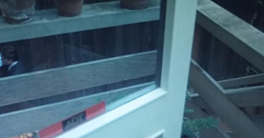
And then she goes up front to see him give the garbage directly to the garbage men and it has to be a bit suspicious of who knows what that he stands there until the grey debris he handed in is crunched in.
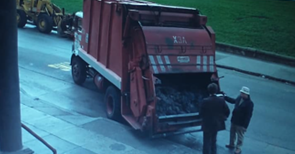
Then to see him,

perhaps a man who had to be coaxed to take the garbage out, standing in the middle of the street, with the garbage pail, watching the truck move off, as if it was an important thing in his life

This creeps her out.
It is, in fact, a version of the Empty Pillow nightmare fantasy, but in a waking state.
Then a clock on the mantel, symbol of the house, and which he walked right by, perhaps making her suspicious by him not undertaking some little ritual of attention that he did every day, this tilts her head, to make her think, and now here the clock chime wakes her up, as it were (but not in fact in this telling).
It is important in the mis en scene that the house and the garden are vertically below the bed, that is, under the bed. The night before she was off camera most of the time expressing her curious suspicion about the odd plant she found in the park, and he was off camera watching the game. Their apparent lack of face time is perhaps the plausibility enhancing device to make it halfway plausible that Elizabeth would then the next morning wake up and have a firm and fixed conviction that this thing that looked like Geoffrey was not Geoffrey. Her problem here is that she has woken up into a nightmare, and may spend the rest of the movie in it. As a result, the garden and the area ways from it to the street or to the back (and in the use of this space Kaufman picks up a thread from Antonioni in Blow Up) are a classic talus, a elaborate dream space meant to stage a reverie as it sinks in as a game of hide n seek to compromise visuality and make one uncertain what is what. As Elizabeth has her Empty Pillow panic attack waking up, she is in a vigilogogic state, but post-sleepy, this space is very quickly sinking down into hypnagogy.
The last movie that I have seen before which somehow in the moment instantiated to become insightful of my own emotional state was when I came back flummoxed on many levels from the doctor in January and then watched Halloween 5, in which the little girl is clairvoyant, and that whole movie is an extension of the original logic of the field of bedsheets on the line that Michael Myers first scared Laurie Strode with, expanded to Ellie’s house, and her taking a shower, and then the house where the girl is living is remade entirely as a “thrin” of such spaces top to bottom, with the basement and then too the laundry chute to it a central part of conveying how it is by clairvoyance that she follows him.
The same sort of thing goes on here. The vision of downtown San Francisco that Kaufman projects is that each of them, Elizabeth and Matthew, working close to the capitol, live their working lives in little mazes of routine, going in and out of places, and without transition are back in the hallways of their official building again. When he passes by a window, Kaufman shows him rush by from the POV of the Raven’s Gate, which only sees the dead, seeing him we know he is to die. But in perhaps a less extreme form the goal here to show each urban space in a somewhat complicated way as another reverie or whack a mole formation. This involves discourse too, and the idea that the spaces are not coherent but mazes of differing POVs not coming to terms with each other. It is kind of a 70s hangover view of the cultural revolution of the 60s, which has left a lot of people floating in a space where it is unclear what is real or not, almost foo.
Skipping over the book signing party, and the whole interaction on the street with Nimoy as if doing his shrinking in the dark on the street, we come then nonsensically by way of the fact that since his wife works there Jeff Goldblum has taken up bathing at the public bath she works at, and so we go into there.
The bathhouse scene has always struck me as strained, as a mis en trope. Again, a mis en trope is a space or structure that is fashioned self-consciously to rhyme with elements of an earlier scene in the movie, or the overall theme of the movie, or the original movie if this is a sequel, in which the whole thing is a constructed version of the same thing. Since in the title sequence we were shown a nice illustration of the pod spore theory of how aliens came to earth, and that featured yucky viscous nature, creepy greenish spores, a complicated landscape, in fact, alien, and then they came to earth, then it follows that in every scene in the movie the talus is going to have to be constructed of the yucky, viscous, green, complicated, and alien, and, indeed, this is what the bath turns out to be. Not only is it a yucky mess, with some men taking what looks like green mud baths, a heavyset one getting out, showing butt crack as he grabs his towel
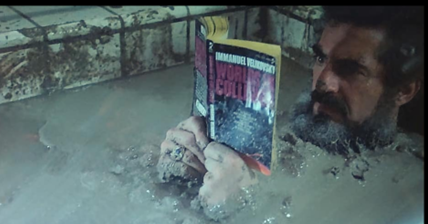
Then to be hosed off and massaged by Nancy as if a dead horse. It is odd that Nancy is working in this place, but as we find out that she is a post-hippie and believes it seems in miracle diets and cures it is construable that she has devised the miracle green mud bath and all of this is of her making. As she is a person that works with odd unshapely bodies in close quarters with a lot of green muck mud and hosing and the like, the space presents itself as an elaborate alibi formation, as well as, at the same time, a plausibility enhancing device, we have already been dislodged from normalcy by the fact that it does turn out that Nimoy as a psychiatrist is a bit of a believer in the charlatan as he claims that there is a sort of “hallucinatory flu” going around, and we are in the middle of a strange pandemic (so to make the movie like the Crazies), and so this bizarre set becomes as if the Jack in the Box space in which the mystery is explored and sprung.
And this is where my inosculation comes in. Again, an inosculation is when, watching a movie, I see a work or art or especially an old book of the 70s made use of to write in the underthebottom of the film, and this started with Saint Maud and the Blake book given her by Amanda last Spring, I read that book, and then explore the degree to which the book exists in the honeycomb in the prototypal ur-space of the movie, and ideas in it fed ideas expressed in the movie, making it all more 3D. When Nancy helps the big man out of the green mud, and we are given a bit of butt crack, behind it we see an older man sitting up to the neck in his mud bath reading a little 70s paperback, of the kind I really like and which has become as it were on the core sources of foo in the decade, what I call creepy 70s paperbacks with creepy old pictures with creepy old captions, entirely presented as fact, but entirely inadequate, and it is as noted Velikovsky’s Worlds in Collision (1950).
The fact that he would read it so intently sunk deep in the green mud serves as a nice visual metaphor for what is being conveyed, that somehow this book is responsible for the theory of the movie we are in.

Velikovsky posits a catastrophist view of the world, he finds evidence of catastrophes past in the earth and planets, evidence still extant, 10, “signs of recent violence, disruption, and fragmentation have been observed on earth, and elsewhere in the solar system, a submarine gigantic canyon that runs almost twice around the globe, a sign of a global twist; a layer of ash of extraterrestial origin underlying all oceans; ‘gases escaping from craters in the moon”. He says that his view of things came to him in New York after he resettled there exiled from Europe. It started with him seeing that in Exodus passages evince a ‘great physical catastrophe, thus linking cosmic events with a worldly event, and placing that in time. 18 He did this by reading Exodus as history, and then conforming its descriptions of celestial events to actual catastrophes in the past. He believes that this places the exodus at the end of the middle kingdom, and overlays these catastrophes on the plagues of Egypt story. Thus, for example, while stoics believed that the earth would end in the great winter or summer of the year, either a cataklysmos, or flooding, or ekpyrosis, or burning, he takes their beliefs to be literally true, based on actual events witnessed in time. From this, he elaborates, sometimes thrillingly so. Having a long time interest in where the belief in blood rain came from, he argues that a comet passing close to the earth passed its perihelion and thus “touched the earth first with its gaseous tail” 68 A rusty pigment then was precipitated on earth and in rivers and lakes, all then with a “bloody coloring” 68 Ipuwer is called an “Egyptian eyewitness to the catastrophe,” writing that the river is blood, blood is everywhere, 69 The hematoid pigment in the water also killed all the fish, which resulted in another plague, the smell, exodus says, and the river stank, 7:21 In Thrace, their tallest mountain was called Haemus because streams of blood flowed from it, said to be where Zeus struck Typhon with a thunderbolt (which Velikovsky says was the comet). 69 In mythology the world was red with the blood of Tiamat, Osiris and Seth respectively 70 This is also why, says Palmer 1892 the Red Sea was called Erythrean, and the mountainous desert the Israelites wandered in Edom, red. 70 Instances of blood rain, Velikovsky writes, have been recorded in divers countries. This red dust, says Velikovsky, falling from the sky, “does not originate in clouds, but must come from volcanic eruptions or from cosmic spaces”. 71 This rain also included naphtha, or petroleum, which poured down on the earth.
The really remarkable thing about Velikovsky’s narrative is that he follows the passage of the comet from phase to phase, and then finds passages in scripture to validate. Thus, after setting up the basic problem above, he then goes on to explain the darkness plague, and this derived from the fact that the earth entered deeper into the tail of the onrushing comet…which resulted in a disturbance in the rotation of the earth… this change or reversal of the angular velocity of rotation caused hurricanes to sweep over the earth, all because of the “sweeping gases, dust and cinders of the comet” 78
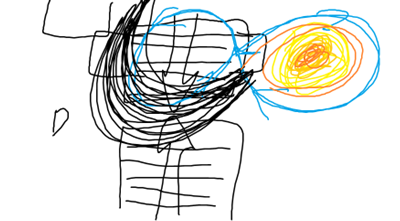
couple of weeks later, it occurred to me, a Ukrainian version
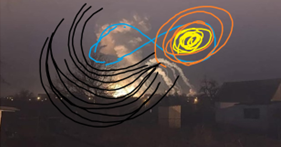
An added dimension here is that Velikovsky makes a special point of saying that all of his ideas came to him in 1940 in New York City after he had escaped to Palestine from Europe, then to New York on account of World War 2: and for that I can’t help but think that in the long tradition of celestial visions over cities going back to Nuremberg 1561 (in my tracing this past year), up through Nerval, and on to the opening title sequence in the movie, that he had these sorts of visions in the skies over, I seem to think, the west side of New York. Thus, I retrace the scirpograph in a for instance sky over New York midcentury 20th century.
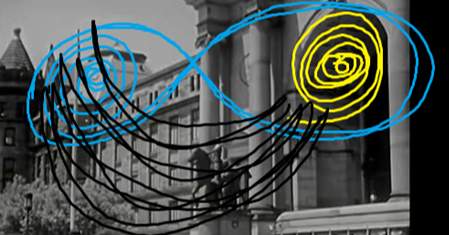
This took place in the nine days mentioned in the bible, when “there was no exit from the palace, and no one could see others in front of them, visibility was so bad”. 79 Here too, this deeper moment of darkness was caused by “the earth’s stasis or tilting of its axis, and was aggravated by a thin cinder dust from the comet”, and the effect of this on the globe caused the “a very extended, gloomy day” 80

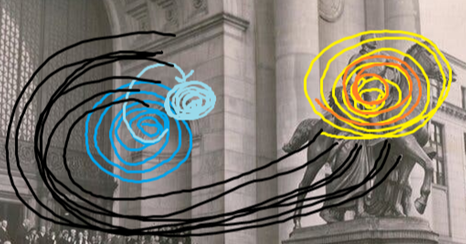
Then came the earthquake, and here, too, a progress report, “the earth, forced out of its regular motion, reacted to the close approach of the body of the comet: a major shock convulsed the lithosphere and there was earthquake all over the globe” 62. Ipuwer, again, witnessed all this, reporting and Upper Egypt “has become a waste, all is ruin” 82



Velikovsky in Ukraine, the Angel of Death, N3 4 22
This then set the table for the Passover of the angel of death, Velikovsky translates the word Nogaf as “smote” meaning, a “very violent blow, as, for instance, the goring of a horse by an ox.” The firstborn crushed at midnight, the Haggadah says, represents that smote. 83 But, there was also a night as bright as the noon, and this too is explainable by the progress dynamic of the comet, “the head of the celestial body approached very close, breaking through the darkness of the gaseous envelope” 84 (it is of interest, however, that the 13th of the month was thereafter bad luck because the first born killing happened on that day, the same day as in traditional Egyptian lore Horus waged war with Seth 85

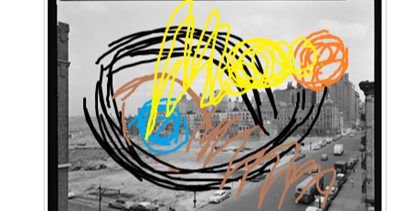
nogaf the smoter of earth, velikovsky 1940 2 23 22

nogaf the smoter 2 Velikovsky in Ukraine 3 4 22
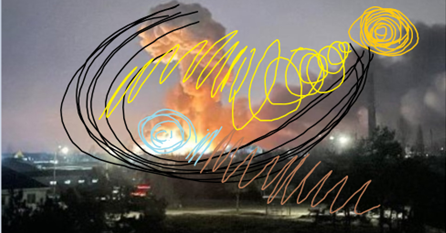
Nogaf the smoter 3 Velikovksy in Ukraine, 3 4 22

Hurakan Velikovsky 1940 2 23 22
end of part 1.
